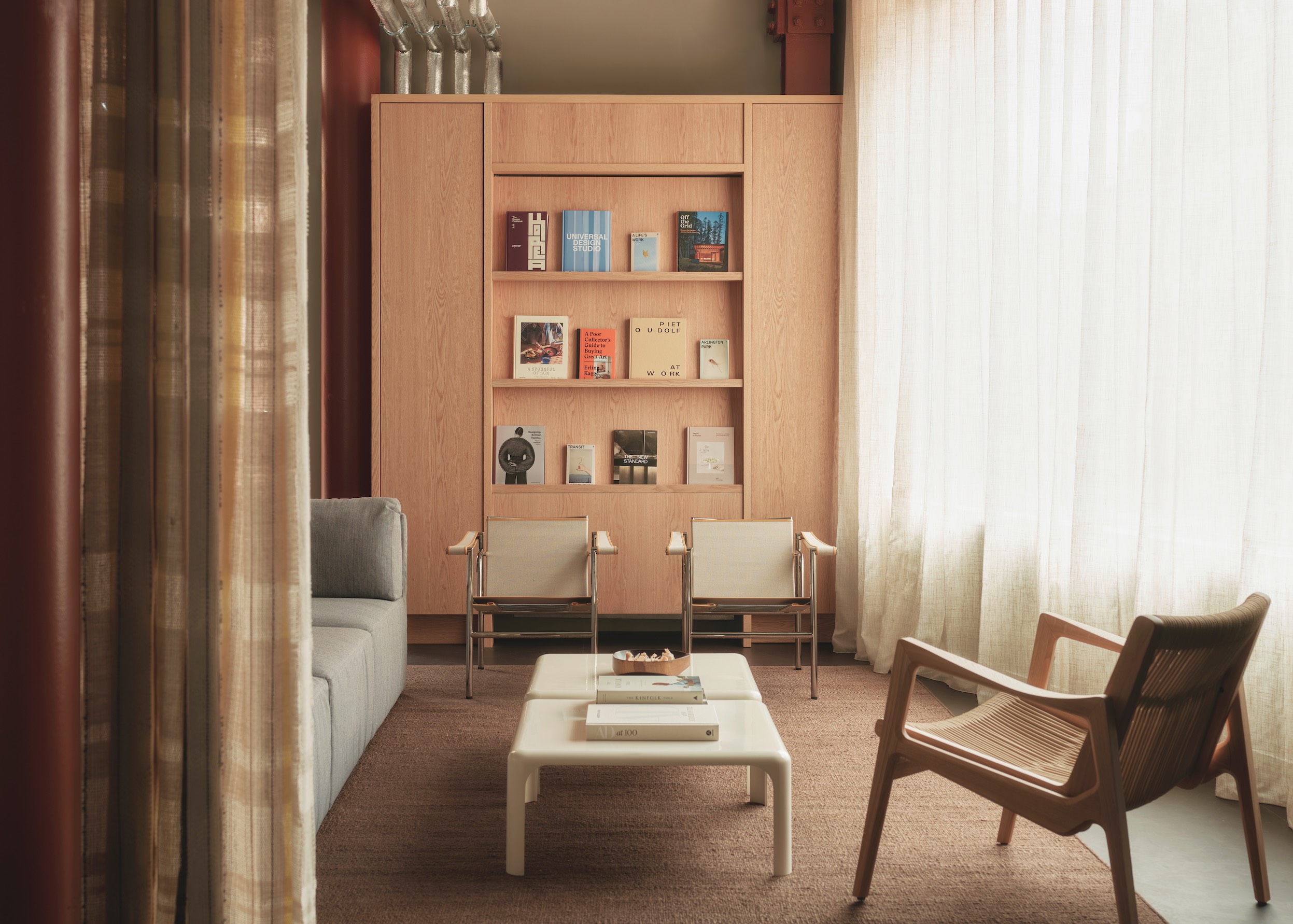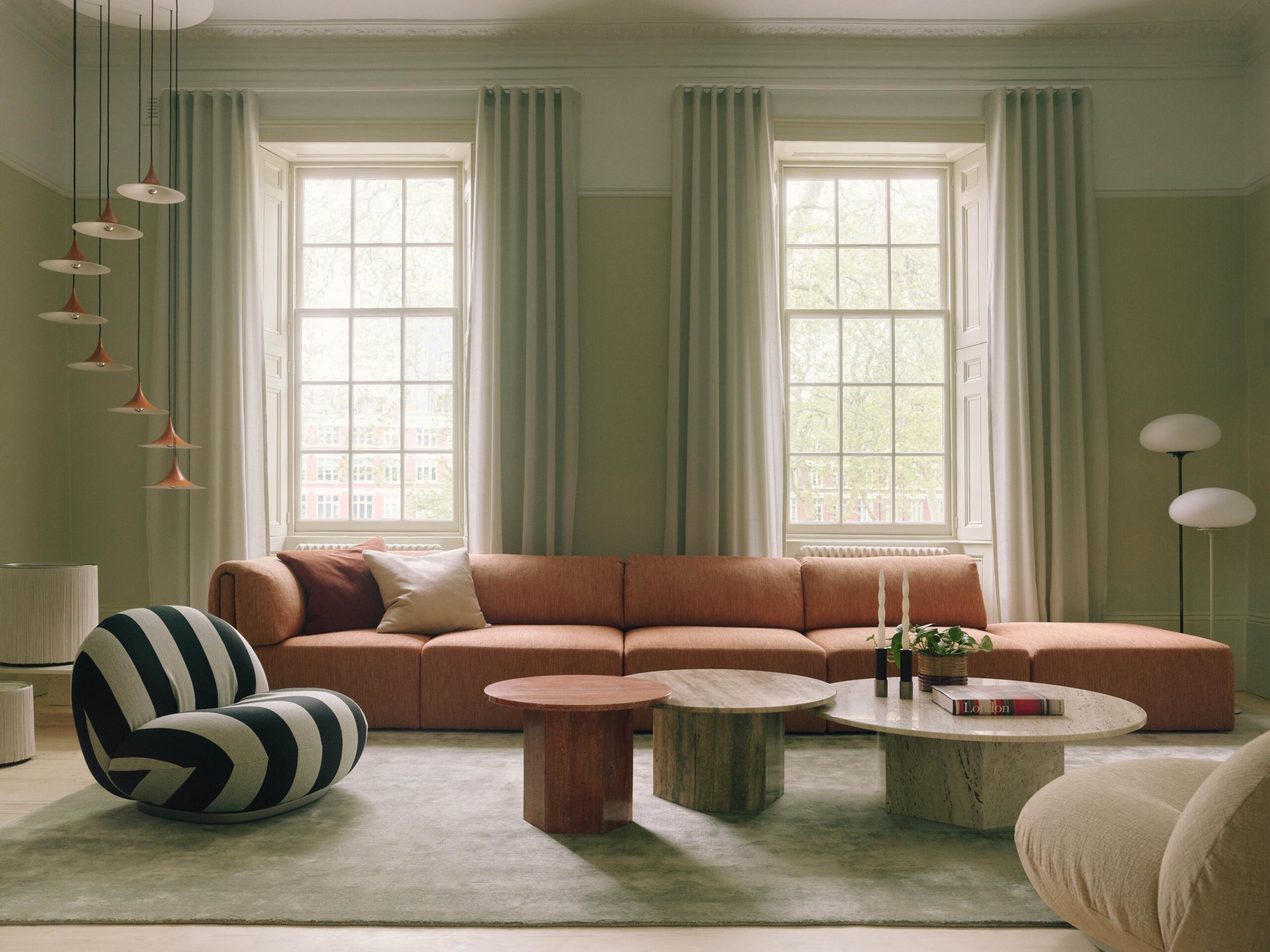 Flip the table on its side and the indented surface becomes a tray||
Flip the table on its side and the indented surface becomes a tray||
Vitsœ continues to revive Dieter Rams’ back catalogue with the reissue of the 621 Side Table, first designed in 1962. As you might expect from Rams, it’s an honest, thorough, quietly beautiful object.
At Vitsœ’s recent launch of the reissued 621 Side Table, someone put the idea to me that Dieter Rams’ work is somehow timeless. It’s a tempting line to take, but one I’ve never found entirely convincing.
Instead, it seems to me he belongs firmly in the late 1950s and 1960s sense of the future. He and Verner Panton would appear to be opposite sides of the same coin: while the Danish designer’s work could be wildly exuberant, though, Rams’ was rather repressed.
The former’s more obviously pop-driven vision could be seen as the inspiration for the 1968 Jane Fonda movie Barbarella; whenever I look at Rams’ work, I’m reminded of Thunderbirds creator Gerry Anderson’s 1970s cult TV show Space: 1999 – it’s more utilitarian, almost androgynous-looking.
It is almost tedious to remind readers quite how influential Rams is. As I sit writing, my iPhone resides next to me on the desk and when I glance out of the window, Jasper Morrison’s Air Chairs for Magis (in grey) sit on my decking – both pieces owe a huge debt to the German designer.
The 621 is something of a grower. My bet is that if it was launched anonymously at Milan it would be completely ignored under the sheer welter of stuff and marketing hokum that accompanies the fair. However, like many of Rams’ designs it repays your attention. The product was originally designed in 1962 and follows Vitsœ’s reissue of the 620 chair last year – other Rams products are in the pipeline apparently.
“Our desire is to make many more of Dieter’s products available and that is what has been driving our business model,” confirms the company’s owner Mark Adams, who is also currently planning the move to a new factory.
“He’s loving it to bits. There’s huge value in having him around during the design as well. He’s been closely involved with the table.” The careful Adams has also taken the trouble to film and note the designer’s wishes for reference in future projects.
The 2014 version of the table contains a few tweaks compared to the original. Most obviously it now has adjustable feet (when it was first released, scallops were created at the bottom of the legs, but for reasons no one can quite fathom, the feet themselves were never made).
Vitsœ has also improved the compound of the injection-moulded, high-impact plastic, which makes it stronger, if a little heavier. It is now possible to stand on the table without it cracking, though Adams doesn’t suggest you do.
The paint finish has also changed to give it more texture, while on the table’s underside, Rams was keen to show the marks where the two steel moulds meld together, feeling that the original made too much effort to hide the process. As he once pointed out: “Good design is honest.”
Like the original, the table comes in two sizes (with heights of 36cm and 45cm) and is available in either black or off-white. At £175 and £195 apiece, or £345 for the pair, it isn’t dirt cheap, but you get what you pay for, and for a seemingly simple product there are a couple of lovely touches. The indents on the side, for instance, solve the engineering issue of giving the piece extra strength by off-setting the bulk of the material. Flip the table around 90 degrees, however, and this scoop creates a nifty little tray.
I confess that I wasn’t entirely certain I was going to like this product when I first turned up at the Vitsœ showroom, wondering if there was a danger that the integrity which oozes from the company’s every pore could tip into piety.
In short, I thought that its new table would be a bit, well, worthy. But I’m happy to report that I left genuinely beguiled – as one would expect from Rams, this is an extremely through and quietly beautiful piece of work.




















